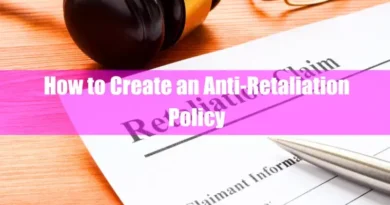I. Introduction
Consent in professional environments is freely given agreement, expressed verbally or non-verbally, by someone who has received all necessary information about a situation or action, with the power to say no at any point without pressure or coercion, particularly considering potential power imbalances and vulnerabilities.
A. Consent in Professional Environments
The word “consent” might seem straightforward, readily exchanged with a nod or a murmured agreement. However, within the intricate maze of professional environments, consent plays a crucial role in shaping the foundation of healthy work cultures. Understanding and upholding clear, informed consent isn’t just an ethical imperative; it’s a cornerstone for preventing harm, fostering trust, and empowering individuals to thrive.
This article delves into the intricate landscape of consent within professional settings. We’ll explore the multifaceted nature of consent, unpack the challenges posed by power dynamics and vulnerability, and equip you with practical tools to navigate this delicate terrain. We’ll break consent down into bite-sized pieces, offering clear definitions, exploring its various types, and highlighting why it matters, especially in professional relationships.
II. Understanding Consent in Professional Contexts
Navigating consent in professional environments can feel like navigating a dense forest – intricate and full of hidden nuances. To ensure everyone feels safe, respected, and empowered, it’s crucial to understand the different types of consent, the influence of power dynamics, and the vulnerability certain individuals might face. Let’s explore these vital aspects in detail.
A. Types of Consent in Professional Environments
No single, uniform way we give or receive consent in professional settings exists. Here are some key types to keep in mind:
1. Explicit vs. Implicit Consent:
Imagine your colleague asks to borrow your stapler. You reply with a grin, “Sure, take it!” That’s explicit consent – clear, verbal agreement. But what if they reach for it, and you offer no objection? That’s implicit consent, inferred from your non-verbal cues and the context of the situation. Remember: Silence or inaction doesn’t always mean consent, especially in professional environments where power dynamics and social pressures can cloud the picture.
Verbal and Non-Verbal Quid Pro Quo Behaviors
2. Informed Consent:
Now, picture your boss requesting you to stay late to finish a project, promising “huge rewards.” Before diving in headfirst, you deserve all the details – what kind of workload? Will you be compensated for the extra hours? This is informed consent, where you have all the necessary information to make a conscious and well-informed decision. Don’t hesitate to ask questions, clarify expectations, and ensure you fully understand what you’re agreeing to before giving your consent.
3. Ongoing Consent:
Consent isn’t a one-time stamp; it’s a living conversation. This is especially crucial in situations like long-term collaborations or mentoring relationships. What felt comfortable initially might change over time. Remember: Be open to renegotiating terms, expressing any changes in preferences, and always ensure consent remains a dynamic element in your professional interactions.
- 20 Quid Pro Quo Harassment Examples and How to Stop Them
- Quid Pro Quo History Examples: A Complex Dance of Mutual Exchange
- Quid Pro Quo Harassment: What It Is? Know Everything
B. Power Dynamics and the Asymmetry of Power in Professional Relationships
Professional environments are rarely equal playing fields. Managers hold authority, senior colleagues wield experience, and interns navigate uncharted territory. These inherent power imbalances can significantly impact consent dynamics. It’s essential to recognize these power differentials and ensure that no one feels pressured, coerced, or obligated to agree to something against their will.
Here are some ways power dynamics can influence consent:
- Direct pressure: A superior asking subordinates to perform tasks beyond their scope without offering alternatives.
- Subtle coercion: Creating an environment where saying no could lead to negative consequences, like missed opportunities or performance appraisals.
- Misleading information: Withholding crucial details or presenting biased information to influence someone’s decision.
C. Consent and Vulnerability
Certain individuals within professional settings might be more vulnerable to pressure or manipulation, making it extra important to safeguard their agency and ability to provide informed consent. Some groups that might be particularly vulnerable include:
- Interns and junior staff: Needing more experience or job security, they might feel obligated to agree to unreasonable requests.
- Individuals from marginalized groups: Facing unconscious bias or discrimination, they might fear negative consequences for raising objections.
- Employees with disabilities: Their reliance on support or accommodations might make them feel pressure to conform to avoid jeopardizing their needs.
By understanding the various types of consent, recognizing the influence of power dynamics, and acknowledging the vulnerability certain individuals might face, we can create professional environments where everyone feels safe, respected, and empowered to make informed choices.
- How to Create an Anti-Harassment Policy: 9 Effective Steps
- Sexual Quid Pro Quo Harassment: A Comprehensive Guide
- Explaining Non-Sexual Quid Pro Quo Harassment.
III. Practical Applications of Consent in Professional Environments
Navigating consent in the professional world isn’t just about theory; it’s about translating understanding into action. Let’s explore specific workplace scenarios and how consent translates into practice, ensuring everyone feels safe, respected, and empowered.
A. Consent in Workplace Scenarios: Everyday Interactions
The everyday hum of the workplace is filled with countless interactions, some mundane, some crucial. In each, healthy boundaries and clear communication are paramount.
1. Physical Interactions:
In professional settings, physical contact should be consensual and respectful. This means:
- Setting boundaries: Make it clear what kind of physical contact you’re comfortable with, whether it’s a handshake, a pat on the back, or nothing at all. Communicate these boundaries assertively and without apology.
- Mindful greetings: Be mindful of individual preferences. Opt for handshakes or fist bumps instead of hugs unless you’re sure the other person is comfortable.
- Addressing unwanted contact: Speak up if someone touches you in a way that makes you feel uncomfortable. You have the right to say no politely but firmly. If necessary, report the incident to HR or a trusted colleague.
2. Communication and Collaboration:
Respectful communication is essential for productive and positive collaboration. Here’s how consent plays a role:
- Open communication: Encourage open and honest communication where everyone feels comfortable voicing their opinions and concerns.
- Respectful dialogue: Foster an environment where differing viewpoints are respected and debated constructively without personal attacks or aggression.
- Inclusive decision-making: Ensure everyone feels heard and has a say in decisions that affect them. Solicit input and encourage participation in brainstorming and problem-solving.
3. Workload and Overwork:
Workloads can ebb and flow, but pressure and coercion never should. Remember:
- Reasonable workloads: Ensure assigned tasks are manageable and within reasonable timeframes. Discuss workload concerns openly with your manager and seek adjustments if needed.
- Overtime requests: Don’t feel pressured to accept overtime if it clashes with your personal commitments or exceeds your capacity. Ask for clear justifications and negotiate alternative solutions if possible.
- Setting boundaries: It’s okay to prioritize your well-being. Communicate your availability and limitations respectfully and avoid feeling obligated to “always be available.”
B. Consent in Professional Development and Opportunities

Professional development and opportunities should be exciting avenues for growth, not sources of discomfort or pressure. Let’s navigate these with informed consent:
1. Mentoring and Sponsorship:
Mentorship can be valuable, but power dynamics can be tricky. Consider the following:
- Choosing a mentor: Seek a mentor who aligns with your values and career goals. Ensure you feel comfortable discussing any concerns openly and honestly.
- Informed consent: Before signing up for a formal mentorship program, understand the program’s structure, expectations, and potential benefits and drawbacks.
- Communication and boundaries: Maintain open communication with your mentor and feel empowered to set boundaries or terminate the relationship if needed.
- 23 Emotional Effects of Quid Pro Quo Harassment.
- How to Report Quid Pro Quo Harassment.
- 13 Powerful Resources for Victims of Quid Pro Quo Harassment.
2. Performance Evaluations and Feedback:
Receiving and providing feedback should be a constructive and growth-oriented process, not a power play. Here’s how to ensure consent:
- Two-way dialogue: Performance evaluations should be a two-way conversation, not a one-sided judgment. Provide and receive feedback respectfully and openly.
- Safe space for feedback: Create an environment where employees feel comfortable sharing their concerns and offering honest feedback without fear of repercussions.
- Right to opt-out: Individuals should have the right to opt out of certain types of feedback or participate anonymously if they feel uncomfortable.
3. Networking and Social Events:
Networking events and social gatherings can be valuable, but participation should always be voluntary.
- Clear expectations: Before attending, understand the event’s purpose and format. Choose events that align with your interests and comfort level.
- No pressure to socialize: Don’t feel obligated to mingle or interact with everyone. It’s okay to excuse yourself if you feel uncomfortable or overwhelmed.
- Respectful interactions: Treat everyone with warmth and courtesy, regardless of whether you know them well. Remember, everyone deserves to feel safe and comfortable in professional settings.
IV. Addressing Misconceptions and Challenges

Even with the best intentions, navigating consent in professional environments can be shrouded in misconceptions and challenges. Let’s shed light on these obstacles and equip ourselves with tools to cultivate a clear, informed consent culture.
A. Debunking Myths and Misunderstandings: Unmasking the Illusions
1. Silence is Consent:
A resounding NO! Silence, inaction, or even awkward smiles don’t automatically translate to consent, especially in power-imbalanced professional settings. Remember, the onus lies on the person seeking consent to ensure understanding and clear agreement.
2. Alcohol and Social Pressure:
Let’s be clear: intoxicated consent is no consent. Similarly, succumbing to peer pressure or social expectations doesn’t equate to genuine agreement. Individuals deserve the space to make conscious choices, free from external influences.
3. Past Interactions Imply Future Consent:
Just because someone agreed to something once doesn’t guarantee consent for every future request. Each situation deserves independent assessment and a renewed, freely given agreement.
B. Addressing Obstacles and Concerns: Facing the Rough Waters

Implementing clear consent practices in professional environments can be challenging sailing. Here are some common obstacles and concerns:
1. Fear of Reprisal:
Some might worry that voicing concerns about consent could lead to negative consequences like career setbacks or retaliation. Addressing this fear requires building a culture of open communication and support, where concerns are addressed fairly and without prejudice.
2. Cultural Norms:
Cultural differences can influence the understanding of consent. Navigating this requires sensitivity, cultural awareness, and a willingness to learn and adapt communication styles to ensure clear understanding.
- Understanding Quid Pro Quo Harassment in Relationships
- LGBTQ+ Vulnerability: Addressing Sexual Harassment
- Addressing Sexual Harassment in Disability
- Understanding Racial Quid Pro Quo Harassment
3. Misinterpretations of Behavior:
Friendly gestures or informal communication styles can sometimes be misinterpreted as romantic or flirtatious intent. Establishing clear boundaries and open communication helps minimize such misunderstandings.
C. Strategies for Overcoming Challenges
Empowering individuals and organizations to foster a culture of consent requires proactive strategies:
- Open Communication: Encourage open and honest conversations about consent, expectations, and boundaries. Normalize discussions about what is and isn’t acceptable behavior.
- Bystander Intervention: Equip individuals with the skills and confidence to intervene if they witness inappropriate behavior or potential consent violations. Provide training and support mechanisms for bystanders to act safely and effectively.
- Reporting Mechanisms: Establish clear and accessible reporting channels for individuals to voice concerns, report violations, and seek support without fear of repercussions. Make sure these channels are confidential and responsive.
- Training and Resources: Provide ongoing training and resources on consent, power dynamics, and respectful workplace behavior for all employees, regardless of their position or seniority.
By dismantling misconceptions, tackling challenges head-on, and implementing proactive strategies, we can collectively navigate the fog of consent and create professional environments where everyone feels safe, respected, and empowered to make informed choices.
V. Conclusion

Our journey into the intricacies of consent within professional environments isn’t a one-time destination but a continuous voyage of learning and evolving. As societal understandings and communication styles shift, so must our approach to consent. We must remain open to questioning our assumptions, embracing new perspectives, and adapting our practices to ensure true inclusivity and respect.
Upholding clear and informed consent isn’t simply a box to tick; it’s the cornerstone of a thriving professional culture. When individuals feel safe to voice their boundaries, trust flourishes, communication deepens, and productivity soars. A consent culture empowers everyone to contribute their best, authentic selves, fostering a sense of well-being and mutual respect that ripples throughout professional life.
This isn’t a spectator sport. We, individuals and organizations alike, can shape the landscape of consent in our workplaces. Let’s commit to open conversations, active bystander intervention, and robust reporting mechanisms. By prioritizing consent, we empower ourselves and each other to navigate the professional world with confidence, clarity, and the unshakeable conviction that everyone deserves to feel safe, respected, and heard. Together, we can chart a course toward a future where consent isn’t just a word but the very compass guiding us toward a truly fulfilling and equitable professional space.
- Recognizing Unlawful Workplace Quid Pro Quo Conduct
- Explaining Religion-Based Quid Pro Quo Harassment
- Explaining National Origin-Based Quid Pro Quo Harassment
- Explaining Sex or Gender-Based Quid Pro Quo Harassment
- Explaining Age-Oriented Quid Pro Quo Harassment
- Explaining Color-oriented Quid Pro Quo Harassment
- Explaining Bystanders vs. Quid Pro Quo Harassment
- The Evolution of Quid Pro Quo Harassment Policies
- 12 Core Elements of Quid Pro Quo Harassment









